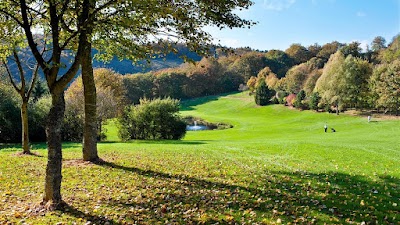Museum of the Battle of the Bulge (Musée de la Bataille des Ardennes)
Overview
The Museum of the Battle of the Bulge in the Canton of Clervaux, Luxembourg, is a deeply moving tribute to one of World War II's most pivotal confrontations. Situated in a region rich in history, this museum serves as a heartfelt memorial for those who fought bravely and those who were liberated during the Battle of the Bulge. More than just a museum, it safeguards the memories and artifacts from this defining moment in history, ensuring that the stories of valor and sacrifice are never forgotten.
The idea for the museum emerged from a shared desire among the citizens of Luxembourg and history enthusiasts to establish a permanent site of remembrance. The battle itself, which unfolded from December 16, 1944, to January 25, 1945, profoundly impacted the local community and the landscape. Recognizing the need to preserve this critical history for future generations, efforts to create the museum began almost immediately after the war's conclusion.
Construction of the museum took place in the late 20th century, driven by collaborative efforts from the Luxembourg government and various historical societies. Their vision was to create a space that would not only showcase historical artifacts but also educate visitors about the events and significance of the Battle of the Bulge. The museum officially opened its doors to the public in the early 1990s, coinciding with the 50th anniversary of the battle, adding a significant layer of context to its launch.
The architecture of the museum reflects the somber yet resilient spirit of the battle. Strategically located within the historical boundaries where key combat activities occurred, the museum allows visitors to immerse themselves in a landscape that bears the scars and stories of the past. The design harmonizes with the surrounding historical structures of Clervaux, creating a poignant atmosphere for reflection.
Inside, the museum is thoughtfully organized to provide a comprehensive understanding of the battle. Visitors can explore an extensive collection of military artifacts, personal belongings of soldiers, detailed maps, photographs, and engaging multimedia presentations. Together, these elements create an immersive experience that guides guests through the chronological events of the Battle of the Bulge.
A special emphasis is placed on personal stories and accounts from both soldiers and civilians. This approach enhances the emotional connection to history, making it more relatable and impactful. Exhibits feature letters, diary entries, and recorded testimonies, giving visitors a voice to those who lived through the harrowing experiences. This personal touch ensures the museum transcends mere historical facts, inviting visitors to connect on a deeper level.
The museum also honors the diverse forces involved in the battle, including American, Belgian, British, and German troops. Each section provides insights into their strategies, experiences, and sacrifices. Dedicated spaces focus on significant events such as the Siege of Bastogne and the Malmedy massacre, showcasing the intense and often brutal nature of the conflict.
Educational programs and guided tours are integral to the museum's offerings. These initiatives are designed to engage school groups, historians, and casual visitors alike, providing deeper insights into the battle's significance and its impact on world history. Furthermore, the museum hosts various temporary exhibitions and commemorative events, particularly around key anniversaries of the battle.
A vital aspect of the museum's mission is to promote peace and reconciliation. By presenting a balanced and factual account of events, it encourages visitors to reflect on the horrors of war and the importance of peace. Collaborating with international historical groups, the museum ensures its content is accurate and respectful to the memories of all those involved.
In summary, the Museum of the Battle of the Bulge in Clervaux stands as a beacon of historical memory and education. It serves not only the local community of Luxembourg but also visitors from around the world seeking to understand the legacy of World War II. Through its detailed exhibits and thoughtful presentations, the museum preserves and honors the memories of liberation and the sacrifices made during the Battle of the Bulge for generations to come.








